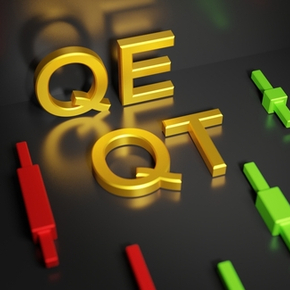By Michael W Arone, Chief Investment Strategist, CFA, State Street Global Advisors
Charles Dickens wrote “A Tale of Two Cities” more than 160 years ago, in 1859. Yet, remarkably, the book’s famous first sentence — “It was the best of times, it was the worst of times, it was the age of wisdom, it was the age of foolishness, it was the epoch of belief, it was the epoch of incredulity, it was the season of light, it was the season of darkness, it was the spring of hope, it was the winter of despair.” — almost perfectly describes investor sentiment for 2020.
Nine months into the pandemic, many markets have eclipsed previous all-time highs. And two COVID-19 vaccines that are roughly 95% effective in human clinical trials have fueled optimism that the pandemic nightmare may end soon, creating enthusiasm for a robust economic and earnings recovery in 2021.
For all 2020’s tumult, the year began with a truce; the Phase One trade deal ended a long, hard-fought US-China trade war. Markets, which were coming off a solid 2019, were building momentum in the first couple of months of 2020 and reached fresh new highs. But by March, COVID-19 and its aftershocks exposed fragile cracks in our health, social, political and economic structures.
Bold Actions
In response, politicians and central bankers acted quickly and aggressively to address the economic and capital market challenges. Substantially expanding the playbook created in the aftermath of the Global Financial Crisis, policymakers may have prevented a repeat of the Great Depression. Their bold actions also bought valuable time for health experts to work toward a solution to the COVID-19 crisis, while markets and the economy began the long road to recovery. This empowered investors to look beyond the economic and corporate profit carnage of the second quarter to a potentially brighter future in a post-pandemic world. As a result, markets rallied throughout the summer — especially stay-at-home technology stocks — as households and businesses adapted to the pandemic-plagued environment.
By fall, investors suffered some brief moments of doubt as several well-known risks tilted more negatively. COVID-19 cases surged as flu season commenced. Anxiety regarding the approaching US election rose. Meanwhile, Republicans and Democrats failed to reach a compromise on a second pandemic relief package, and US-China tensions reignited. All of this kept measures of market volatility elevated, and investors’ nerves frayed.
Thankfully, investors’ fears have subsided since the election. Market participants seem increasingly comfortable that the new balance of power — a Biden administration, reconstituted Congress and conservative Supreme Court — will help ensure that the US government’s clever checks and balances will function to prevent most of the extreme policy ideas on the left or right from becoming law. Also, the potentially powerful duo of Janet Yellen, who has been nominated for US Treasury Secretary, and Federal Reserve Chairman Jay Powell has bolstered investor confidence that more fiscal and monetary stimulus is likely on the way.
The road ahead
Rising anticipation of the inevitable defeat of COVID-19 has resulted in greater expectations for a robust economic and earnings recovery in 2021. Cyclical value sectors and industries, small-cap, international developed, and emerging market investments have already started to close the performance gap with the previously high-flying US large-cap technology and growth stocks. This increased market breadth is healthy and further underscores the strength in the market’s recent rally.
However, investors must reconcile whether this is another head fake in a long line of head fakes or a more permanent change in market leadership. As the economy and earnings accelerate and the pandemic fades, this underlying shift in market dynamics is likely to last for long stretches in 2021.
Yet the structural challenges of rising debt, yawning deficits, aging demographics, and the disinflationary forces of technology continue to provide considerable obstacles for the economy, interest rates and inflation to reach escape velocity beyond the next year or so. As a result, it’s not about cyclical value or secular growth in 2021. Rather, it’s about balancing cyclical and secular change in investment portfolios.
Investors’ single biggest challenge may continue to be in fixed income allocations. Historically, fixed income investments have delivered diversification, capital preservation and income benefits to investors. But more than a decade of falling interest rates and central bank interference in markets has permanently distorted the fixed income landscape. Endlessly low interest rates have deprived investors of much-needed income. This has forced them to uncomfortably extend fixed income maturities, reduce credit quality, and increase investments in hybrid securities (e.g., convertible bonds and preferred stocks) to generate sufficient yield. In many instances, the compensation investors are receiving for accepting these additional risks is often inadequate.
If, as expected, the economy and inflation continue to rebound, it will put upward pressure on interest rates and bond prices will fall. Higher rates could also result in increased credit defaults, especially in speculative fixed income securities. And, greater exposure to non-investment-grade bonds and hybrids has increased correlations between bond and equity allocations, weakening some of the diversification and capital preservation benefits of certain fixed income investments.
Takeaway
Navigating an increasingly difficult fixed income environment will continue to be a struggle for many investors in 2021. There are no easy choices — only tradeoffs. Investors may need to use a variety of fixed income investments — including agency mortgage-backed securities, emerging market debt, senior loans and preferreds — to pursue scarce income, while carefully balancing risks.
As a tumultuous 2020 draws to a close, the subtle underlying shifts in stock and bond markets extend to global policy coordination too. The pandemic and its hardships have highlighted the need for greater global cooperation. The tough isolationist rhetoric of the past four years is beginning to soften. World leaders recognize that deepening collaboration will better prepare them to tackle complicated health, social, trade and climate challenges. President-elect Joe Biden has pledged to rejoin the World Health Organization and Paris Climate Agreement. Fifteen Asia-Pacific nations formed the world’s largest free-trade bloc in November. Globalization trends are resurfacing and will likely continue in 2021.
Shrinking trade, a significant headwind for global growth in recent years, may soon start expanding again. This just might be the catalyst needed to unlock long-anticipated relative value opportunities in international developed and emerging markets. In addition, increased global policy efforts to address climate change are likely to keep shares in environmental, social and governance (ESG) , clean power and alternative energy investments well bid.
As the global economy and corporate profits continue to recover, investors should consider these three themes when building portfolios for the approaching post-pandemic environment:
1. Barbell cyclical and secular change
2. Balance risk in the pursuit of income
3. Position for more global cooperation
Photo Credit: Robert Sachowski via Flickr Creative Commons
DISCLOSURE
The views expressed are the views of Michael Arone as of December 1, 2020, and are subject to change based on market and other conditions. The opinions expressed may differ from those with different investment philosophies. The information provided does not constitute investment advice and it should not be relied on as such. It does not take into account any investor’s particular investment objectives, strategies, tax status or investment horizon.



